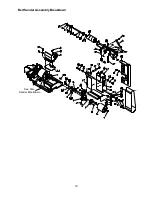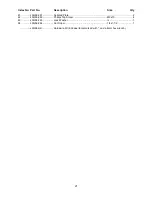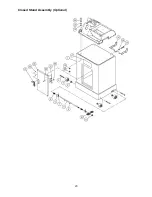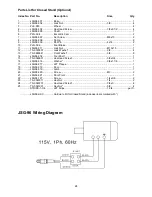
12
Belt Tracking Adjustment
1. Connect the machine to the power source.
One time quickly turn the machine “ON” and
“OFF”. This will allow you to view the belt’s
tendency to run down the middle, to the right,
or to the left. The belt should run centered on
the sanding drums. Do not let the belt run off
the drum to the right or left. The belt will tear
when it contacts parts of the machine.
2. Disconnect the machine from the power
source. Move the tension handle (A, Fig. 10)
to the “Loosen” position. Center the belt again
and move the handle to the “Tighten” position.
3. Release the tracking lock (B, Fig. 10) by
pulling up on the handle. If the beIt has a
tendency to track left of center, turn the
adjusting knob (C, Fig. 10) counterclockwise
until the belt tracks in the center.
4. If the belt has a tendency to track right of
center, turn the adjusting knob clockwise until
the belt tracks in the center.
5. Secure the tracking lock by pushing the lever
down. Note: when tightening the tracking lock
the belt may tend to move to the left.
6. Fine tune tracking by turning the adjusting
knob (C, Fig. 10).
Note:
To prevent the sanding belt from stretching
and to prolong belt life, remove tension from the
belt if not using for a long period of time.
Disc Table Adjustment
1. Disconnect machine from the power source.
2. Place a square on the table next to the
sanding disc (Figure 11). Loosen locking
handle and move the table to 90°. Tighten
locking handles.
3. Place a combination square (A, Fig. 12) in the
miter gauge slot (B, Fig. 12) and check the
distance from the slot to the edge of the
sanding disc. Slide the square along the slot to
the other end of the disc and check the
distance. The distances should be equal to
ensure that the miter gauge travels parallel to
the disc.
Figure 10
Figure 11
Figure 12










































